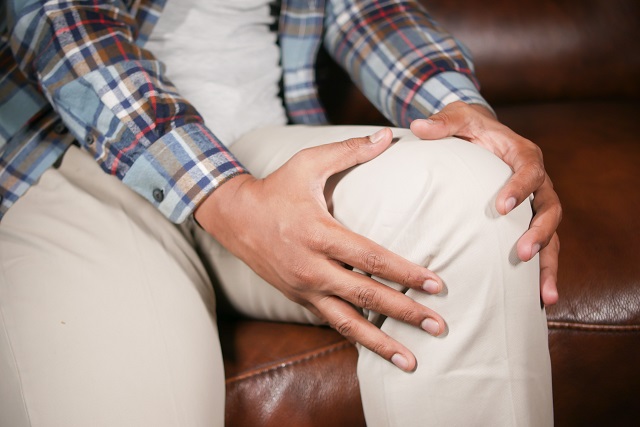Common causes of knee problems and how to prevent them
Common causes of knee problems and how to prevent them
Common causes of knee problems and how to prevent them
Knee problems are one of the most common injuries people experience. Whether you’re an athlete or just dealing with the wear and tear of everyday life, your knees are susceptible to a variety of problems. Here are some of the most common knee problems and how to prevent them.

Photo by Towfiqu barbhuiya on Pexels
1. Leg muscle weakness
Leg muscle weakness can be a serious concern for people of all ages. Weakness in leg muscles increases the risk of falls, especially in older adults, a Stanford University study found. Weaker muscles mean the knees can’t hold as much weight, so they give in faster.
If you suffer from chronic knee pain, your doctor may recommend arthroscopic knee surgery to help strengthen the muscles and ligaments around your knee. This procedure can provide great relief for those who suffer from chronic pain or instability in the knee.
There are a variety of exercises that can be done at home or with the help of a personal trainer to help strengthen your legs and reduce knee instability. With some dedication and hard work, a person can regain the strength needed to stay mobile and independent.
2. Wear high heels or shoes with little support
Wearing high heels or unsupportive shoes can wreak havoc on your knees over time. Shoes that provide good arch and heel support can help keep your knees aligned and prevent long-term problems.
Wear supportive shoes whenever possible to protect your knees and joints. High-impact activities such as running or playing sports may require specially designed footwear to absorb impact and help prevent wear and tear on the knees.
In addition to maintaining a healthy workout regimen, wear the correct type of shoes to avoid unnecessary stress on your knee joints.
3. Running or jumping on a hard surface
Whenever you engage in physical activity, it is crucial to take precautions to protect your body from injury. This can be as simple and seemingly trivial as making sure the ground you’re running or jumping on has the right type of surface.
Hard surfaces like concrete, tennis courts, and sidewalks can strain your knees and other joints, causing serious injury if you land on the wrong ground or jump too high.
If you regularly perform these activities on hard surfaces, it’s wise to wear shock-absorbing shoes or use exercise mats to provide extra cushioning between you and the ground. Taking these steps can help protect your body from injury without sacrificing the enjoyment of exercise.
4. Overweight
Being overweight is known to take its toll on many parts of the body – putting extra stress and strain on areas like the knees. Unfortunately, carrying a few extra pounds can have some serious health consequences.
Many people may not realize that being overweight can put extra stress on their knees, leading to discomfort and limited mobility. If the pain persists or gets worse after a few days, it is important to consult a medical professional, as this could indicate something more serious.
Knowing how extra pounds affect certain body parts can help individuals make more informed decisions about exercise and eating habits to maintain a healthy lifestyle.
5. Osteoarthritis
Osteoarthritis of the knee is common in adults over the age of 50. It occurs when the cartilage that covers the ends of bones wears away, causing joint pain and stiffness. The condition can gradually worsen, affecting daily life and making mobility difficult and uncomfortable.
Research suggests that exercise may benefit people with knee OA because it increases mobility, reduces pain, and strengthens the muscles around the joint.
Although the condition may require costly medical treatment or surgery depending on the severity, taking preventive measures such as staying active may be a practical way to delay or avoid long-term damage.
6. Rheumatoid Arthritis
Rheumatoid arthritis, often referred to simply as RA, is an autoimmune disease that affects the lining of a person’s joints and can cause pain, swelling, stiffness, and even long-term damage to bone and cartilage.
When it comes to the knees, RA can have potentially devastating effects. Joints in this area may become deformed or completely immobilized. Appropriate medication, physical therapy, anti-inflammatory drugs, and surgery are all viable options for treating knee pain associated with rheumatoid arthritis.
If you suspect you may have rheumatoid arthritis in your knee, consult a medical professional before symptoms worsen.

Photo by Terry Shultz PT on Unsplash
All of these can put stress on the knee and cause pain or injury. If you experience knee pain, you must see your doctor for treatment. Rest assured, with some simple lifestyle changes and preventive measures, you can protect yourself from further injury and keep your knees healthy.
Keep it Artkraft
Check more articles in our categories DIY Home & DIY Projects et Tips & Crafts .
Thanks for visiting we hope our article Common causes of knee problems and how to prevent them
, we invite you to share the article on Facebook, instagram and whatsapp with the hashtag ☑️ #Common #knee #problems #prevent ☑️!


Comments are closed, but trackbacks and pingbacks are open.